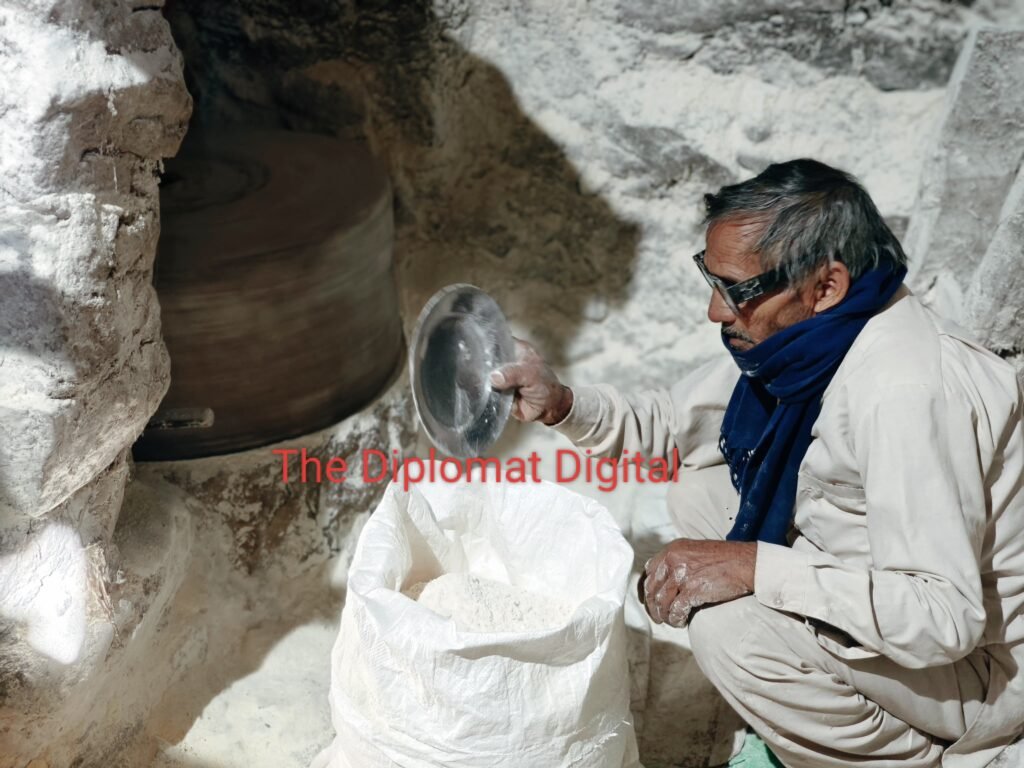Arun Jasrotia

Udhampur :TDD,The traditional water mills of the Jammu and Kashmir are facing extinction. These are sustainable technologies spanning several centuries from the time of their manufacture and now disappear quietly into the landscape.

Traditional water mills, the ‘Gharats’, were once the lifeline of Old culture and social fabric; they are now mere remnants that mark the beginning of the end for this sustainable grain processing method.

Gharats are usually raised in well-thought and designed one and half story buildings and along riverbanks and along little streams. They used to grind grains into flour using the power of flowing water. Their upper half comprises larger stones seated on wooden or iron spindles, driven by flowing water directly channeled from the mountain streams. When rushing water in the mill house strikes the blades of the turbine, they rotate, thus driving the grinding mechanism, producing between 4-8 kg of flour per hour at a power of 1.0 to 1.5 KW.
But Gharat is more than its mechanical component. Traditionally the mills also became gathering points for the villagers because they would come to wait their turns to grind their grain and leave about a small amount of flour for the miller. Even though they are private-owned, Gharats were just considered part of the community, which represents the spirit of cooperatives mountain societies.
The water flour mills going to despair due to electric flour mills. Today, modern infrastructure developments have disturbed the natural flow of water such as building roads and creating water lift projects for drinking purposes. In Udhampur district, villages which used to have three to four Gharats within each of these are now mere memories for older people while younger ones haven’t ever seen one in their lifetime.
The crisis has affected operators like Mukhtyar Singh aged 70 years, from Laddan village of Udhampur district. Singh by his original Dogri language talked about his grave worries towards the diminishing water levels in the Tawi River, which have put his forefathers’ mill to a standstill. The situation does not threaten his livelihood alone but also endangers the tradition of keeping alive sustainable food processing knowledge.
Apart from their economic importance, Gharats are important in the direction of nutrition as the flour produced from them is considered more nutritious than flour from electric mills, having a distinctive taste that mountain communities have traditionally cherished. They were all-purpose, milling different grains, grinding spices, churning yogurt, and even expelling oil, otherwise valuable tools for mountain communities.
The need for recognizing the existence of different kinds of ecosystems being created by these traditional water mills continues to grow since they are facing extinction. Unlike their electric counterparts, gharats are an environmental technology that is completely carbon neutral. Its decline, therefore, means the loss of an environment-friendly technology, as well as a long-standing cultural heritage on which mountain communities lived for ages. This state of affairs demands an urgent focus on the preservation of the traditional eco-friendly marvels of engineering that appear closer to extinction in India’s mountainous landscape.TDD





